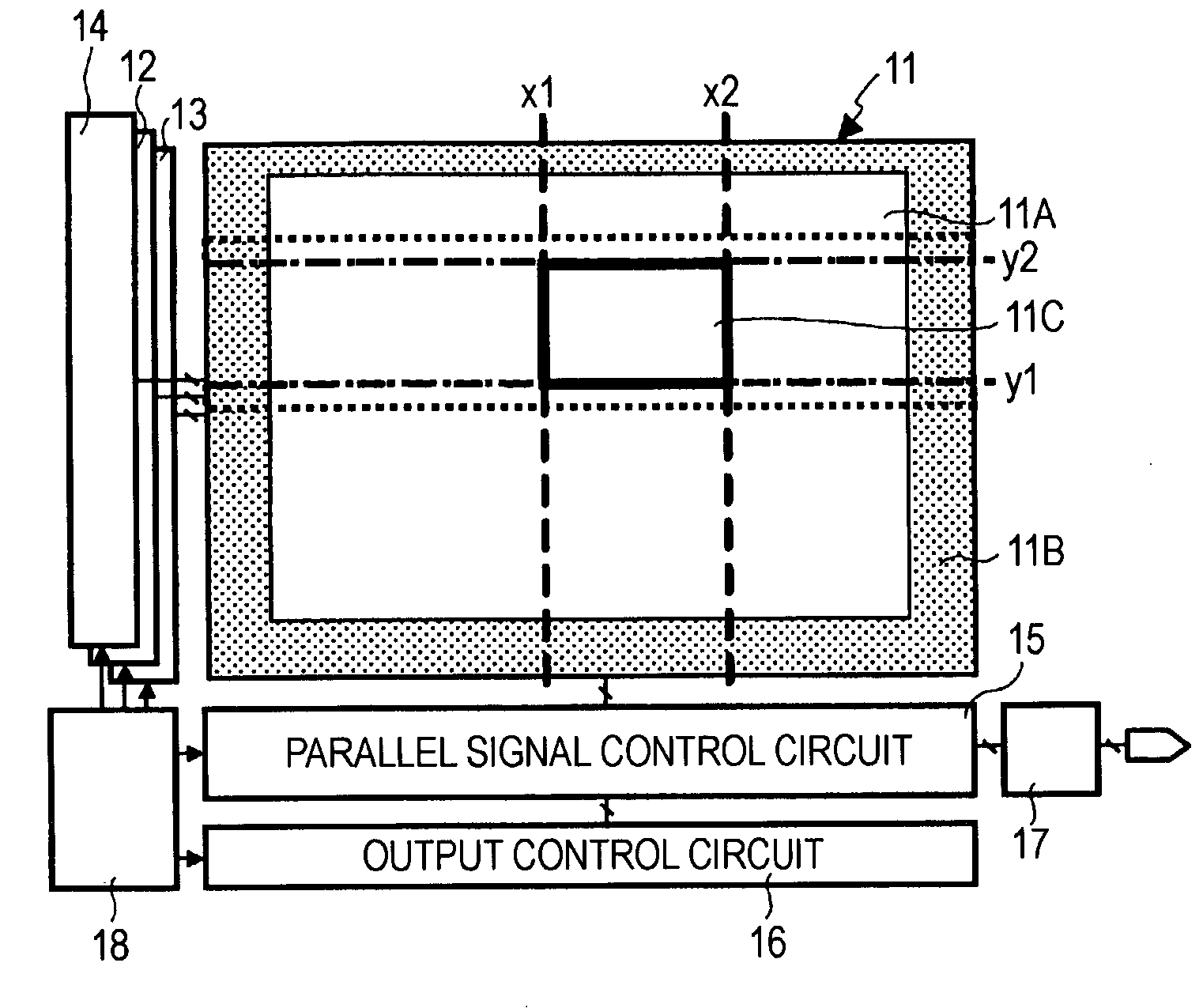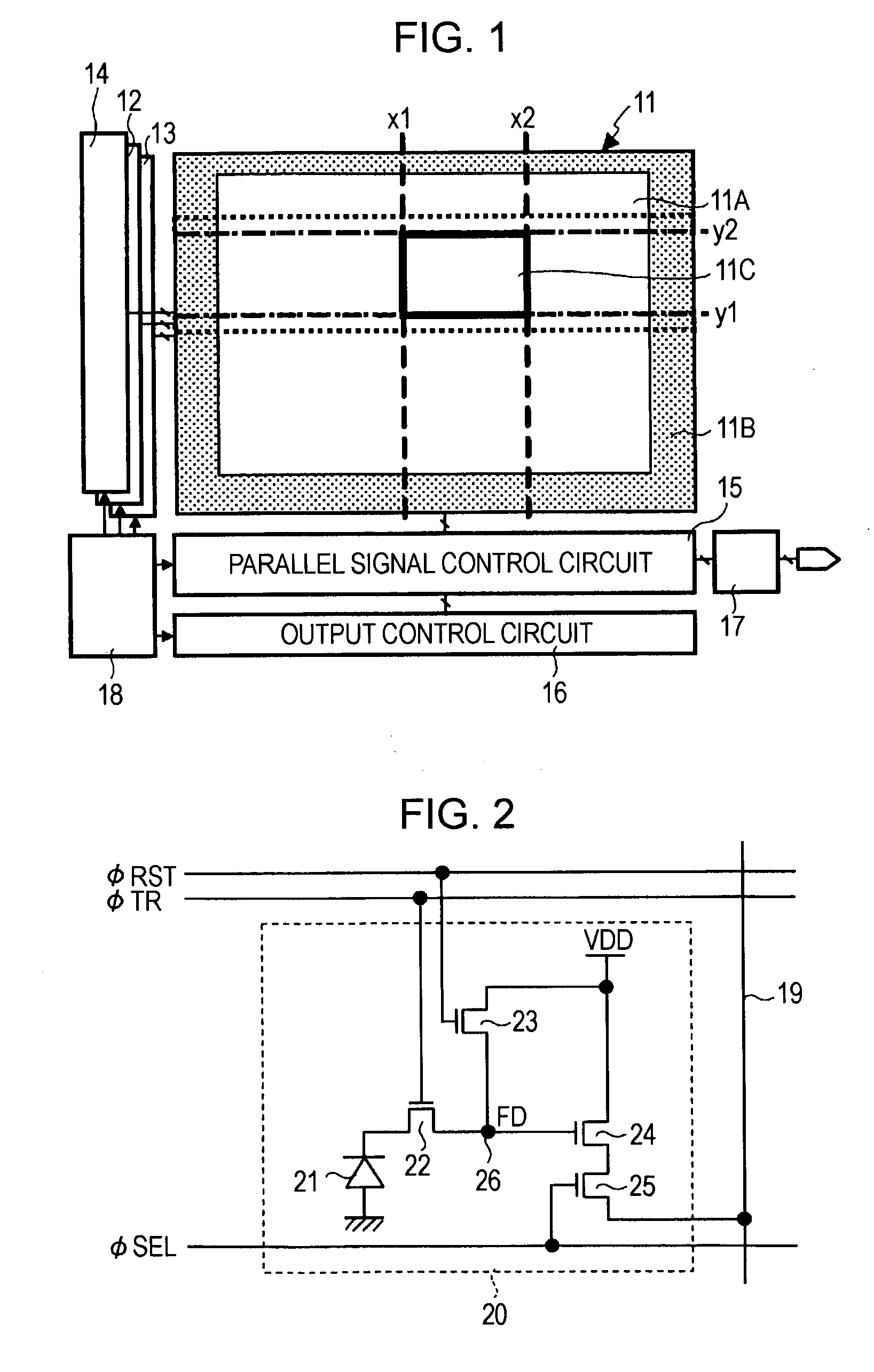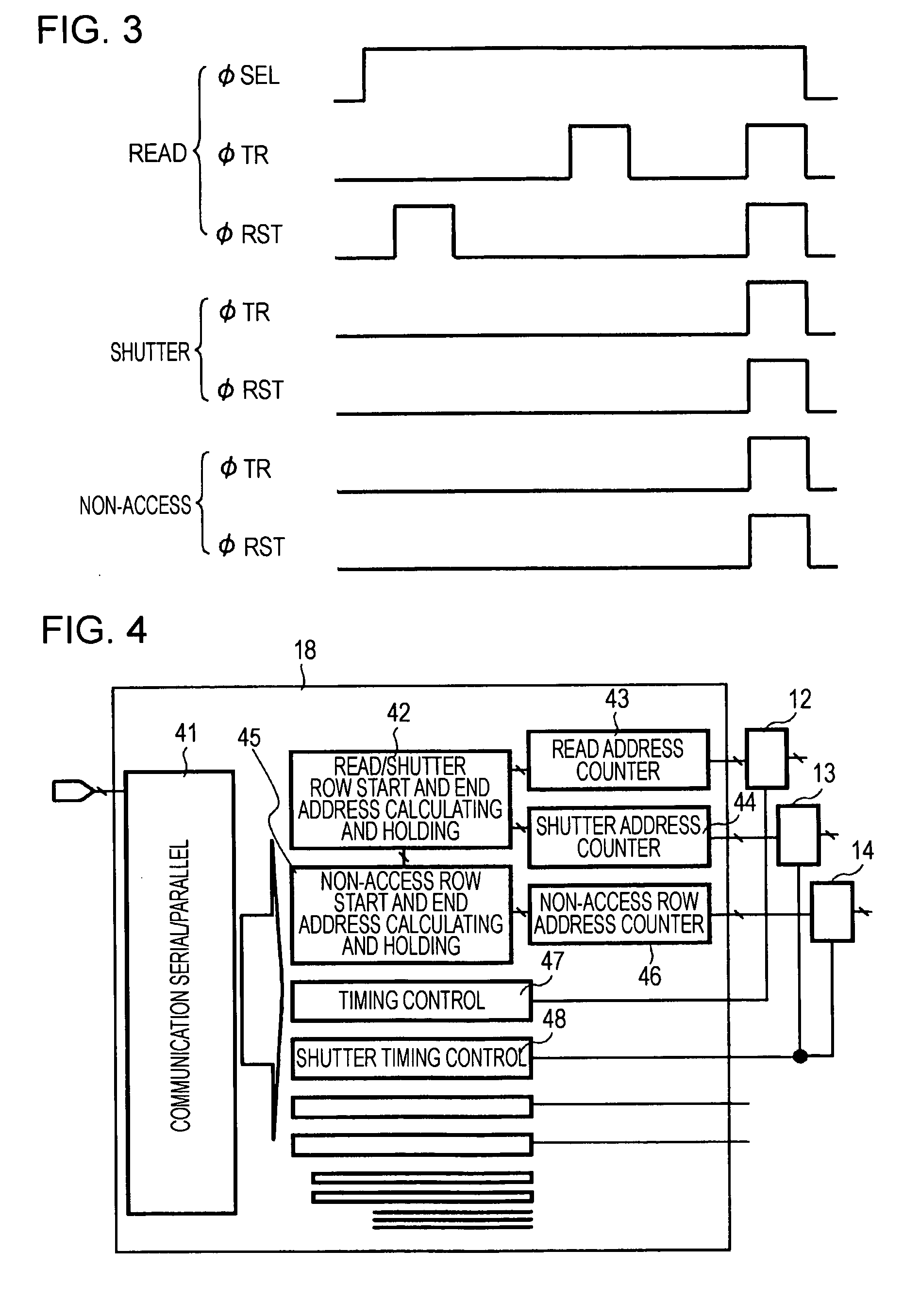Solid-state image pickup device, driving method for solid-state image pickup device, and image pickup apparatus
a driving method and image technology, applied in the direction of radio frequency controlled devices, television system scanning details, television systems, etc., can solve the problems of increased power consumption and noise for simultaneous resetting, difficult control circuit configuration,
- Summary
- Abstract
- Description
- Claims
- Application Information
AI Technical Summary
Benefits of technology
Problems solved by technology
Method used
Image
Examples
first embodiment
[0034]FIG. 1 is a block diagram schematically showing the structure of an X-Y-address-type solid-state image pickup device, such as a CMOS image sensor, according to a first embodiment of the present invention.
[0035] Referring to FIG. 1, a CMOS image sensor according the first embodiment includes a pixel array area 11 in which pixels (not shown) each including a photoelectric conversion element are two-dimensionally arranged. The CMOS image sensor also includes a row read control circuit 12, a row reset control circuit 13, a non-access row reset control circuit 14, a parallel signal processing circuit 15, an output control circuit 16, an amplifying circuit 17, and a timing control circuit 18, which are peripheral circuits of the pixel array area 11. These peripheral circuits are formed, for example, on the same chip (semiconductor substrate) as the pixel array area 11.
[0036] The pixel array area 11 includes an effective pixel region 11A, a light-shielded pixel region 11B, and a pa...
first modification
[0074]FIG. 6 is a schematic diagram showing the pixel array area 11 in a CMOS image sensor according to a first modification of the present invention. In FIG. 6, the equivalent parts as in FIG. 1 are referred to with the same reference numerals.
[0075] In the first modification, although the basic structure and operation are similar to those in the first embodiment, a feature of the first modification is that pixel information in ranges 11F and 11G (the ranges encircled by thick lines in FIG. 6) of the light-shielded pixel region 11B, as well as pixel information in the partial-read region 11C, is read when partial reading is performed.
[0076] In this case, for the non-access row reset regions 11D and 11E, operations and advantages provided by resetting can be achieved, as in the first embodiment. In addition, reading pixel information in the light-shielded pixel region 11B facilitates black level setting.
[0077] In the first modification, when the light-shielded pixel region 11B is...
second modification
[0079]FIG. 7 is a schematic diagram showing the pixel array area 11 in a CMOS image sensor according to a second modification of the present invention. In FIG. 7, the equivalent parts as in FIG. 1 are referred to with the same reference numerals.
[0080] In the first embodiment, the number of rows of the non-access row reset regions 11D and 11E can be set in accordance with an externally set value. However, in the second modification, instead of externally setting the number of rows of the non-access row reset regions 11D and 11E, the number of rows of each of the non-access row reset regions 11D and 11E below and above the partial-read region 11C is fixedly set to half the number of rows of the partial-read region 11C.
[0081]FIG. 8 is a block diagram showing an example of the structure of a non-access row start and end address calculating and holding block 45′ in the second modification. In FIG. 8, the equivalent parts as in FIG. 5 are referred to with the same reference numerals.
[...
PUM
 Login to View More
Login to View More Abstract
Description
Claims
Application Information
 Login to View More
Login to View More - R&D
- Intellectual Property
- Life Sciences
- Materials
- Tech Scout
- Unparalleled Data Quality
- Higher Quality Content
- 60% Fewer Hallucinations
Browse by: Latest US Patents, China's latest patents, Technical Efficacy Thesaurus, Application Domain, Technology Topic, Popular Technical Reports.
© 2025 PatSnap. All rights reserved.Legal|Privacy policy|Modern Slavery Act Transparency Statement|Sitemap|About US| Contact US: help@patsnap.com



